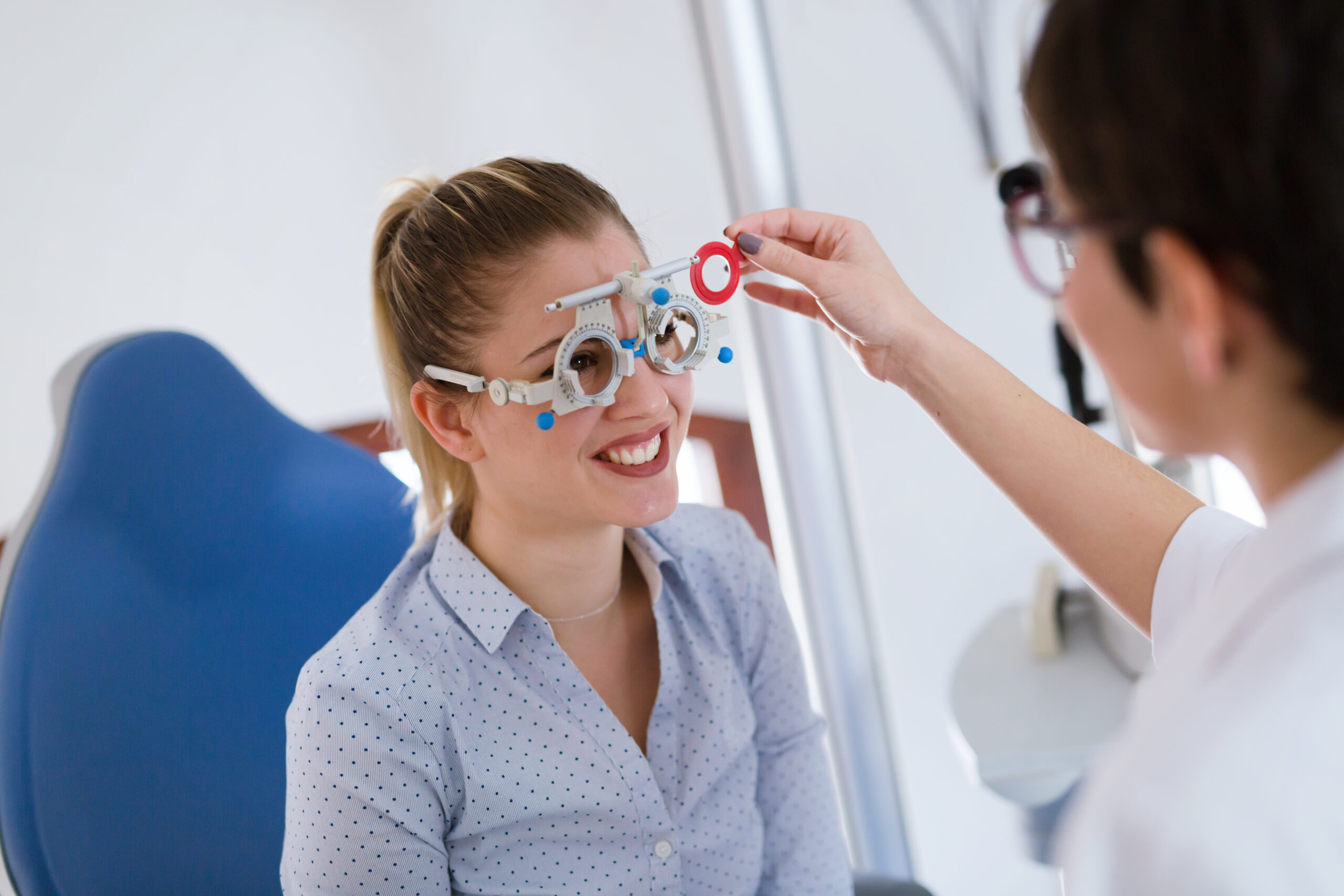Corneal Refractive Therapy vs. Laser Eye Surgery: Which is Right for You?

Whether you suffer from nearsightedness, farsightedness, or astigmatism, you’ve probably considered other vision correcting options aside from glasses. These refractive errors might be common, but they have the capacity to diminish your quality of life along with your eyesight. When you’re ready to make the switch to better vision with less hassle, there are plenty of factors to take into consideration, including which type of treatment you should seek out. Read on to learn more about the differences between corneal refractive therapy and laser eye surgery to determine which option will meet your needs and budget.
Refractive Vision Errors
In the case of refractive errors, the shape of your eye does not bend light properly, meaning what you see is a blurred or fuzzy image. There are three main types of refractive errors: myopia (nearsightedness); hyperopia (farsightedness); and presbyopia (diminished near vision with age). You may also suffer from astigmatism, which similarly blurs images due to irregularities in the shape of the eye.
Many of these issues are inherited and can worsen with time if left untreated. The only way to correctly identify a refractive error is to schedule an examination with an optometrist who provides quality eyecare services and will be able to diagnose any existing conditions and recommend further treatment.
What is Corneal Refractive Therapy?
Because myopia is incredibly common, a variety of effective procedures have been developed to treat the condition. One of these procedures is known as corneal refractive therapy (CRT). CRT is a popular option for people who struggle with refractive errors because the procedure is non-invasive, non-surgical, and can be easily reversed.
CRT uses specialized corrective lenses to temporarily alter the curvature of the cornea to enhance vision. Unlike other, more invasive options, CRT can be easily adjusted to suit the needs of the wearer as their eyesight changes. This makes it an ideal solution for children, whose bodies develop rapidly. Another benefit of this treatment method is that the corrective lenses are only worn at night, so you’re free to forget about contacts and glasses during the day.
What is Laser Eye Surgery?
While CRT is a reversible and temporary, only adjusting the shape of the eye for a short period of time, laser eye surgery is a more involved corrective procedure. Similar to CRT, laser eye surgery alters the shape of the cornea, however, this is achieved by using lasers and is a permanent treatment method. Using an incredibly precise laser, a thin flap is created in the cornea which allows for another laser to come in and reshape the underlying corneal tissue. Once the eye has been successfully reshaped, the cornea flap is put back into place.

Who is a Good Candidate for CRT?
The ease of application and the fact that CRT lenses are only worn at night makes them an ideal solution for people with active lifestyles who don’t want to be hampered by daily contact lenses or glasses. Children are also good candidates for the lenses because they adjust well to the procedure and their lenses can be adjusted to suit their vision needs as they grow. Additionally, CRT is a much more affordable option for solving refractive issues on a budget. While CRT lenses can range from about $800 to $1,200, the cost is still small when compared to the $3,000 price tag associated with each eye with laser eye surgery.
Discuss your options with a qualified team of eye doctors, like theone at Eyelux Optometry where our highly trained staff will work with you to conduct a thorough eye exam to find the right solution for your needs
